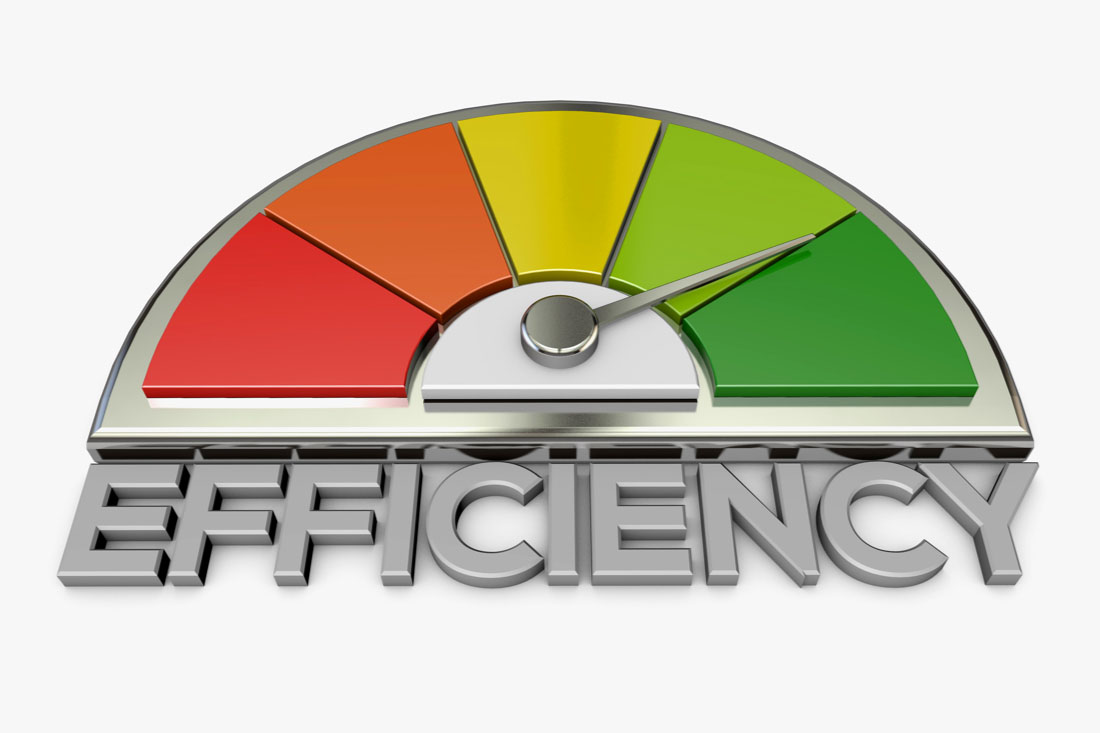You’ve heard a lot about flexible work. But is your organization embracing flexible workspaces?
In today’s rapidly evolving work environments, many business leaders are trading traditional offices for dynamic work environments — ones that cater to the diverse needs of remote and hybrid employees.
Sound like a strategy your teams need? Keep reading for a primer on flexible office space and options for the modern workforce.
What are flexible workspaces?
Flexible workspaces are exactly what they sound like — adaptable office setups that support a variety of work styles. Instead of assigning everyone a permanent desk, these environments feature various options such as hot desks, quiet zones and team huddle areas. In addition, most flexible workspaces incorporate options for remote work setups. The goal of flexible workspaces is to allow people to choose where, when and how they’re most productive.
Why are flexible workspaces important?
Flexible workspaces do more than save on real estate — they help build a culture of autonomy, productivity and trust. When you give employees the freedom to choose how and where they work, higher performance is bound to follow. Why? Because flexible workspaces allow you to:
Adapt to employee needs
By offering a variety of work settings — from open lounges to quiet zones — you empower employees to choose the right space for each task. No one’s stuck at the same desk all day. Instead, teams gather in coworking areas for brainstorming before shifting to quiet zones or remote offices for focused tasks. This adaptability not only enhances productivity but also gives employees a greater sense of control.
Enhance collaboration and communication
Flexible office layouts encourage collaboration by breaking down the barriers of cubicles and closed doors. At the same time, flexible designs make it easier to carve out quiet zones — so collaboration doesn’t come at the cost of concentration.
Attract and retain talent
In today’s job market, flexibility is a competitive advantage. Many candidates prioritize work-life balance, and offering a dynamic work environment helps meet this demand. Whether it’s through hybrid policies, wellness-focused design, natural lighting or the ability to work from anywhere, flexible work arrangements show your commitment to employee well-being and help you stand out as an employer of choice.
How to provide effective flexible workspaces
Designing a flexible work environment takes more than just rearranging furniture. It requires intentional space management aligned with how your teams actually work.
1. Set up a smart desk-booking system
Give employees an easy way to reserve desks, meeting rooms, or quiet zones in real time — whether they’re on a laptop or mobile device. A good system shows what’s available, integrates with calendars and helps everything run smoothly behind the scenes.
It means:
- No more desk scrambling: Everyone knows they’ve got a spot when they come in.
- Better maintenance: A reliable system allows facilities teams to schedule cleaning and updates based on actual usage.
- Data‑driven capacity planning: Historical reservation trends inform future space investments.
2. Set up modular, multi-use zones
Think beyond fixed furniture. Use lightweight desks, rolling whiteboards and movable chairs so teams can quickly reshape a space to fit their needs — whether it’s a brainstorm session, solo focus time or a quick team huddle. In other words, build flexibility into each environment.
This allows you to:
- Make the most of your space: Say goodbye to rooms sitting empty all day.
- Give teams control: Let employees tailor the space to match each project.
- Spark creativity: Writable walls and changeable layouts encourage fresh ideas.
3. Designate areas for distinct purposes
Not every task calls for the same setup. Designate quiet areas for deep focus, casual lounges for quick chats and tech-ready meeting rooms for formal discussions. Each zone should have the tools people need, from power outlets to video conferencing gear.
This helps you:
- Support all work styles: People can choose the setup that works for them.
- Cut down on noise: Dedicated zones reduce distractions across the office.
- Build trust: Offering choice shows you value the different ways different people work best.
4. Track how your space is used
Use tools like badge swipes, desk sensors or built-in analytics to see which areas are popular — and which ones go unused. Calculating office space utilization helps you make smarter decisions about space planning and investments.
This allows you to:
- Right-size your space: Match capacity to actual demand.
- Back decisions with data: Justify changes with real usage metrics.
- Validate investment decisions: Guide upgrades or new builds with hard metrics.
5. Set clear guidelines
Make it easy for everyone to know how things work. Share simple policies for booking rooms, cleaning up shared spaces and keeping noise levels respectful. Use signage, automated nudges or cheat sheets in each area to keep things top of mind.
This ensures you:
- Keep things running smoothly: Avoid double bookings and “seat stealing.”
- Protect shared resources: Clean, organized spaces work better for everyone.
- Reduce friction: Clear expectations mean fewer distractions and smoother days.
How to implement a flexible workspace policy
Designing a flexible workspace is just the beginning — clear policies make it work long term. Set simple guidelines for booking spaces, keeping areas clean and respecting noise levels. Encourage feedback, offer training and be ready to adjust as needs evolve.
Not sure where to start? Here’s a roadmap to get you started:
1. Establish clear policies
Define rules for booking spaces, keeping areas tidy and managing noise. Share them widely and offer quick training so everyone knows how to use the system.
2. Encourage a culture of flexibility
Make flexibility part of day‑to‑day life. Invite feedback, highlight teams making smart use of flexible setups, and reward experimentation so people feel safe to adapt and innovate.
3. Monitor and adjust
Check in regularly through surveys or team huddles. Use feedback to tweak policies and fine‑tune spaces. Showing you’re listening builds trust and boosts buy‑in.
5 metrics to measure the effectiveness of your flexible workspace
If you want to know whether your flexible workspace is actually working, you need the right metrics. Tracking a few key indicators helps you understand what’s driving productivity, how employees feel about the setup and where there’s room to improve.
1. Space utilization rate
How much of your workspace is actually being used? Office space utilization shows the percentage of time desks, meeting rooms or other zones are occupied. The basic equation is:
Number of employees ÷ Total workplace capacity
If you have 100 employees in a space designed for 300, your utilization rate is 33%. This helps you understand the percentage of time that desks, meeting rooms and collaboration zones are occupied.
2. Booking lead time and no‑show rate
Are people planning ahead or booking last-minute? Tracking the average time between when a space is reserved and when it’s actually used helps you understand employee behavior — and whether your setup supports spontaneity or structure. Your no-show rate shows how often bookings go unused.
To calculate booking lead time, subtract check-in time from reservation time:
Reservation time – Check-in time
To calculate your no-show rate, use this formula:
(Number of no-shows ÷ Total reservations) × 100
If an employee reserves a desk on Monday at 9 a.m. for Wednesday at 9 a.m., the lead time is 48 hours. If you have 100 desk reservations but employees only use 80, your no-show rate is 20%.
3. Peak vs. off‑peak demand patterns
Are your busiest times aligned with your space setup? Understanding when people actually use the office helps you plan better. To calculate peak patterns, track occupancy by hour and day over a week or month.
For example, let’s say your office is 80% full from 10 a.m. to 2 p.m. Tuesday through Thursday, but under 25% full Mondays and Fridays. In this instance, you have a clear off-peak pattern.
4. Employee satisfaction and engagement scores
Are employees satisfied with your workspace? Comparing survey responses with usage data gives you insight into how the space is working. To calculate this metric, average responses to workspace satisfaction survey questions.
For example, let’s say your workspace comfort scores average 4.6 on a five point scale — and those employees also show the highest usage rates. These numbers suggest your space design meets employee needs.
5. Collaboration density and cross‑team interaction
Are different teams actually working together in shared spaces? This metric helps spot silos and celebrate collaboration. To monitor this metric, track shared space usage and overlap between teams.
For example, if marketing and sales teams book the same meeting space 30% of the time but product and support only overlap 5%, you might explore ways to encourage more cross-team interaction for the latter.
Get more out of flexible workspaces with ActivTrak
Creating a flexible workspace is a smart move — but making it work takes visibility, data and the right tools. ActivTrak helps you go beyond floor plans and furniture by giving you insights into how, when and where your teams work best.
From tracking space utilization to measuring productivity and engagement, our platform helps you fine-tune your environment to support focus, collaboration and efficiency — no matter where work happens.
Request a demo to see how ActivTrak supports productivity management and start building workspaces that truly work for everyone.





